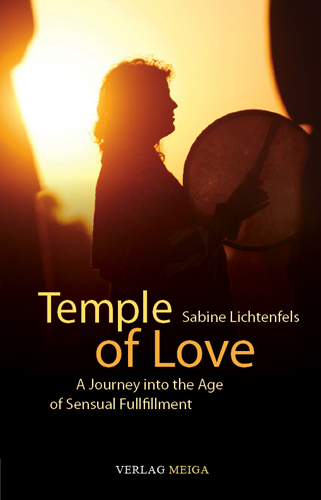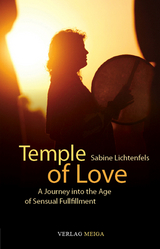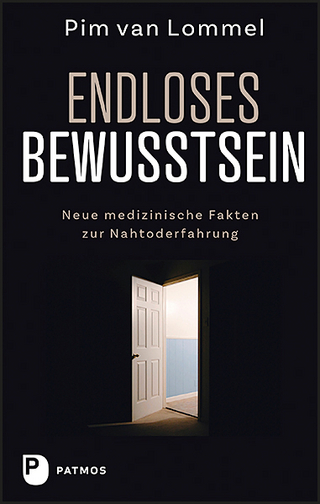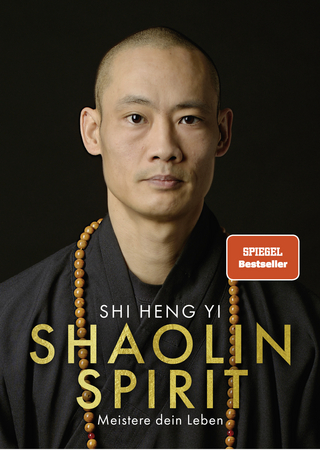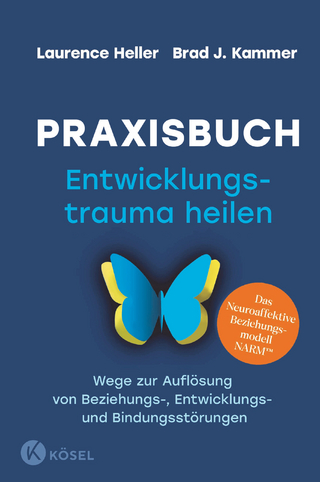Temple of Love
Meiga (Verlag)
978-3-927266-44-5 (ISBN)
At the center of this high archaic culture was care for all that lives. The strong current of Eros and the mutual joy between the genders was sacred to them. They knew neither private property nor separation. The body of the woman was like the body of the earth, nourishing and giving. Their religion was the celebration of life itself, from the first sunbeams in the morning until the sparking stars in the night. For thousands of years, their non-violent culture flourished, based on the friendship between the genders.
For the author, this view into the past is simultaneously a start of a humane future. The temple of love is to be recreated in the light of modern knowledge, in practical life between men and women in model communities for a future without war.
Sabine Lichtenfels, Born 1954, theologian and peace activist. In Almendres stone circle in Portugal she came into contact with ancient human knowledge by means of her mediumistic gifts. She discovered that a peaceful tribal culture had existed before our knowledge of history, living in cooperation with nature and having an advanced knowledge of love and community life. They foresaw their own downfall and preserved their knowledge of a harmonious life in tune with the Goddess in their stone circles. Sabine Lichtenfels named their universal, community-oriented way of life “prehistoric utopia” and took this as a model for a community of the future and peace university, Tamera Healing Biotope I, which she founded together with Dieter Duhm and others in Southern Portugal. Sabine Lichtenfels has written two books about her discoveries originating in Almendres stone circle: Traumsteine (Dreamstones) and Tempel der Liebe (Temple of Love).
Foreword
Introduction
The story of Manu and Meret
On the track of my dreams
The migration to Malta
The first night: encounter with Lillith
I love being a woman
Female sexuality and Religion
The first visit to the temple
In the Temple of Tarxien
Odessey over the island
Lillith speaks: leave the role of victim
The dream of a spiral
Hagar Qim And Mnajdra
Adventure with a fisherman
Night thoughts of a female revolution
In the Temple of dream-power
The teachings of Mudima
Labyrinth and spiral – in the temple school of wisdom
The fish
A spiritual experiment
Dream of the apostle Paul and his fight against the woman
A visit to the womb of the Earth
In the Temple of Love
Rediscovering the stone circle
Education in the women's temple
About animal sacrifice
Cycle of life, clans and everyday life in the temple culture
Education of men
The celebration of fertility
Nudime and her celebration of love
The end of the old culture on Malta
Farewell and journey home
The essence: The fate of love
Words of the Priestess of Malta to today's man
Remarks about names, places and symbols
Bibliography
Projects of Sabine Lichtenfels
Foreword All knowledge is remembering Plato Everyone has the past that he deserves Graffiti on a house in Berlin What if the history that we learn from our history books is rather incomplete? What if our past was not just a series of wars and conquests? What if it turns out that our view of the past was so far highly one-sided? And what if our perception has been greatly influenced by patterns of interpretation that belong to a cruel but transitory age? Those who work wholeheartedly for a positive peaceful future look for and need a different interpretation of history. If the human being were always an “intelligent monster” whose violent drives could only be restrained by threats of punishment, how would he then be able to live peacefully in the future? But maybe everything was completely different. Historians are starting to admit that the present age of violence and fear is a barbaric but short period of only a few thousand years that interrupted a much longer time of peaceful development of high cultures. It is possible that human beings were ori- ginally able to live in peace. The last few peaceful tribes still in existence could be the dispersed remnants of a former global peace-culture. If this is really true, as archaeological finds seem to show, then part of the peace work of the future is to remember our past correctly. Sabine Lichtenfels undertook an adventurous journey to do exactly that. Equipped with a talent for intuition and per- ception by means of inner resonance, with an unorthodox way of thinking and with discipline for the tasks of her inner voice, with decades of experience in creating community, in peace work and in conflict research, she followed the traces 5of the ancient culture on Malta. She had used these skills previously in her research into the stone circle culture of Portugal1. About six thousand years ago, a temple culture existed on the island of Malta. Megaliths and a variety of overground and underground temples and small female figurines are still to be found there. It was clearly a society without weapons or defensive fortifications, a culture which suddenly disappeared about 2500 years before Christ without any signs of violence, and a culture which still provides riddles for today’s researchers. What Sabine Lichtenfels discovered – through her dreams, her intuition, in her daily experiences and through her me- diumistic research into the ancient temples – she describes here. Her story reveals itself before our eyes as excitingly as a thriller. As if searching for the right radio channel, she looks within herself for the frequency which is in resonance with a possible peaceful past. And she asks how we today, in the midst of our modern world, can create this resonance with a culture in which Eros was sacred. A culture in which there was no fight between the genders and in which women protected the innermost knowledge, a culture in which the Goddess was always present and every being and every thing was sacred. Sabine Lichtenfels persistently overcomes, step by step, the confusion, doubts, habits and morals of today’s culture. She succeeds in this to the extent to which she entrusts herself to her inner guidance. From the very beginning she encounters a historical power which outlasted the ages, a personification of everything in the female soul that could not be controlled: Lilith. Lilith is the name of a female knowledge which knows most intimately the destiny of every woman – the fire of first love, the lust of female desire, the pain of abandonment and the tears of every mother. She has herself experienced social exclusion and the fight against all that is female. She knows 6 stamina beyond all hope, and everlasting new beginning. She has also been seducer and avenging angel; she knows anger, malice and fight. Lilith went through all of these, embraced them within herself and transformed them into deeply humane knowledge and deeply humane power. Taken by her hand, we discover a culture which had sensual female knowledge and grace at its core. In this culture, that which is today forbidden and proscribed was the most sa- cred and deserved the greatest attention: lust, the power of Eros and the mutual joy of the genders. The knowledge of creation of true joy of life and joy in the body was the basis for living fearlessly and non-violently over the millennia. This is the actual core of this book: the connection of the sacred and the sexual as a secret of a peaceful and fulfilled life. This is also the message for all those who try to build a new peaceful culture today: end the exclusion of Eros. Discover it and give it new life as a sacred source of joy and power. Discover its humane core, disconnected from entanglement with violence, commercialisation and false morals. Work together, men and women, youngsters and adults: end envy and competition and the war of the genders. Put healing Eros on the altar of your hearts and of the communities which must be built. I wish for readers of this book to allow themselves to be touched by the power of Lilith and by the vision of a sensually knowing way of life, just as I was, and from this to draw consequences for their own life. For the children of the future. Leila Dregger, journalist
| Übersetzer | Douglas Baillie |
|---|---|
| Verlagsort | Bad Belzig |
| Sprache | englisch |
| Original-Titel | Tempel der Liebe |
| Maße | 152 x 229 mm |
| Gewicht | 400 g |
| Einbandart | Paperback |
| Themenwelt | Sachbuch/Ratgeber ► Gesundheit / Leben / Psychologie ► Esoterik / Spiritualität |
| Schlagworte | Frieden • Matriarchat • Zukunft |
| ISBN-10 | 3-927266-44-2 / 3927266442 |
| ISBN-13 | 978-3-927266-44-5 / 9783927266445 |
| Zustand | Neuware |
| Haben Sie eine Frage zum Produkt? |
aus dem Bereich
